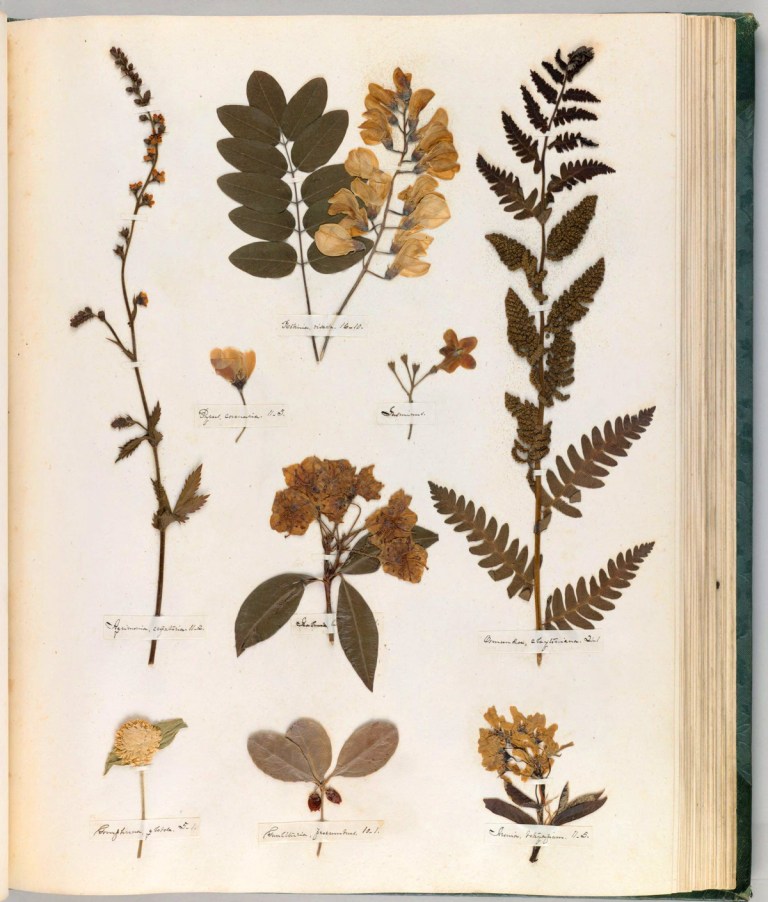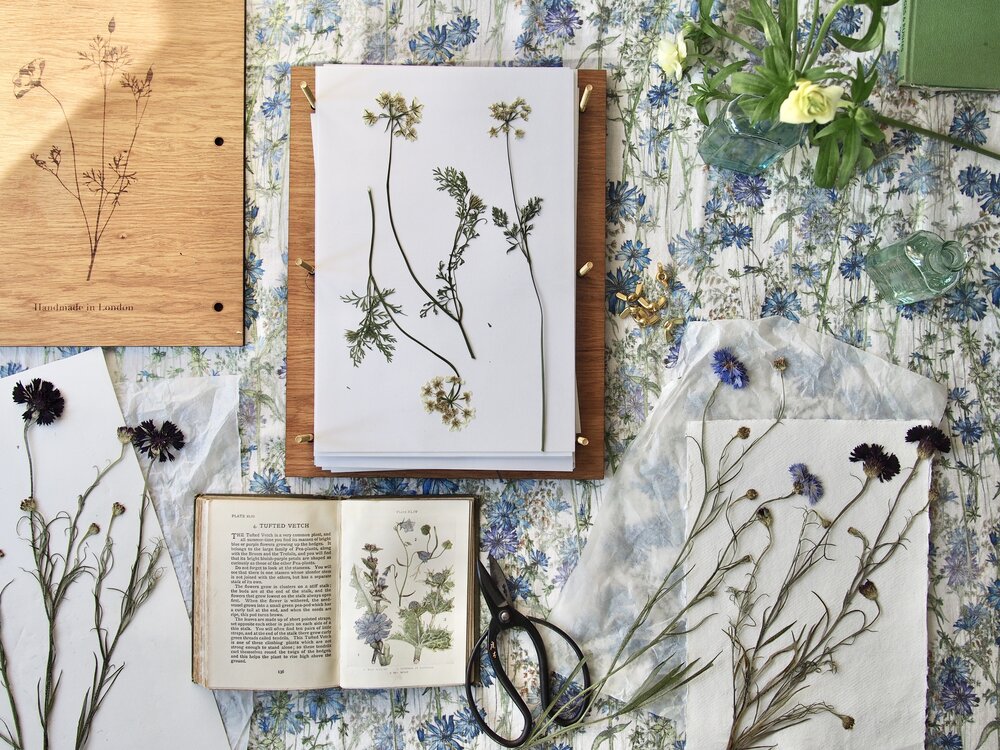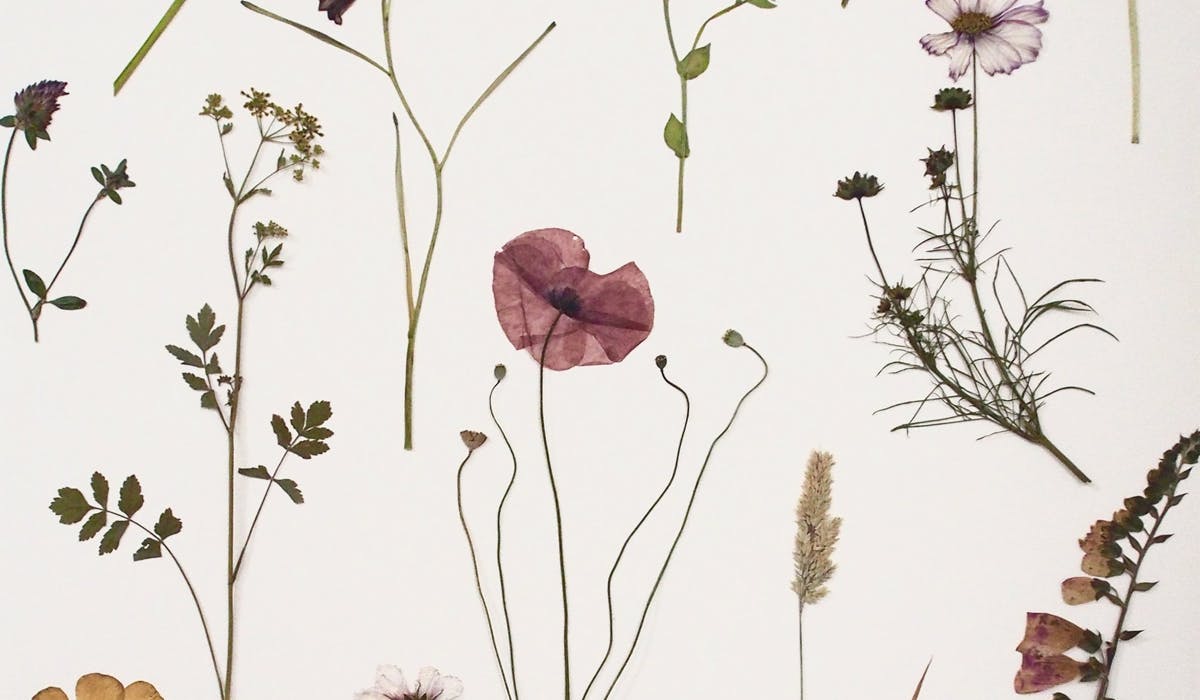“Did you ever know that a flower, once withered and freshened again, becomes an immortal flower, – that is, that it rises again?” Emily Dickinson
The art of flower pressing has blossomed in recent years and is an ideal way to reconnect with nature, creativity and preserve the beauty and wonder of treasured blooms. A versatile art form and meditative activity it moves us away from the clutch of social media, phones and laptops and into our gardens, fields and meadows to discover wildness and wonder.
The origins of flower pressing can be traced back to ancient Egypt, China and Japan. In Japan, oshibana, the art of arranging flattened dried blooms into ornate compositions on paper, had been part of the culture for centuries. It is also a craft that is reminiscent of a romantic Victorian England, most notably with the work of Emily Dickinson and her Herbarium; a collection of 424 plant specimens and their Latin names, preserved and spread over 66 pages (see example below).

“The joy of flower pressing lies in its accessibility,” explains Melissa Richardson, Founder of JamJar Flowers. “You can create an artistic display that will last a lifetime with just a handful of simple flowers from a window box, adding in plants and foliage for extra texture.”
It is something anyone can do, with a few simple tools, producing stunning artworks as unique as the flowers and leaves themselves. It is a beautiful way to preserve a moment in time, a season, a favourite bouquet…to treasure forever.
Start by selecting a collection of fresh flowers and leaves. Wildflowers such as cosmos, pansies and sweet peas are ideal for pressing due to their flat petal structure and thin stems. Larger blooms such as roses and daffodils are trickier to press as they retain more moisture and can mould easily. Flowers such as geraniums can be pressed by carefully separating the delicate flower heads individually. Daisies are good too, but go for the flowers that are newly in bloom as these are easier to press. Colours will fade over time as the flowers dry, so pick something vibrant that will stand out; freshly bloomed flowers are always best.
Next you will need blotting paper and card to ensure every part of the plant is pressed, and any moisture absorbed. Historically heavy books were used to press flowers amongst their pages, which can still work well, but nowadays there are plenty of good flower pressing kits on the market. There are those that use straps to hold the press in place, like this great kit from Me and My Bloomers.

Or a more traditional flower press using wing nut bolts is available from Ede Flowers here. Kits are great as they generally supply everything you need to get started.
Once you have gathered your botanical beauties, open your press, and gently lay each one on blotting paper, spreading out petals and leaves with space between each. Place another layer of blotting paper on top of the flowers, followed by a layer of card, and press down. Repeat this process until your press is full. Try to keep the thickness of plants and flowers similar on each layer, so they have an even press.
Close the press and tighten the bolts or straps. Store somewhere warm and dry. Try and wait at least two weeks before opening them up to avoid damaging the flowers – they can easily stick to the pages and tear when they’re not fully dry.
Once your flowers are dry, you can extract each one gently using blunt tweezers, taking care to only hold the flower or plant at it’s most sturdiest point (the centre of a flower head for example) and not by the delicate petals.
You are now ready to create your own artwork or cards. Using a thin paintbrush, apply a water-based glue to the back of the flowers, taking care when brushing the petals and lay them onto a piece of good quality paper or cards and design however you wish.

Hope you’ve found this quick guide to flower pressing useful. I’d love to see what you create, so please do share on Instagram using the hashtag #littlepieceofwonder

